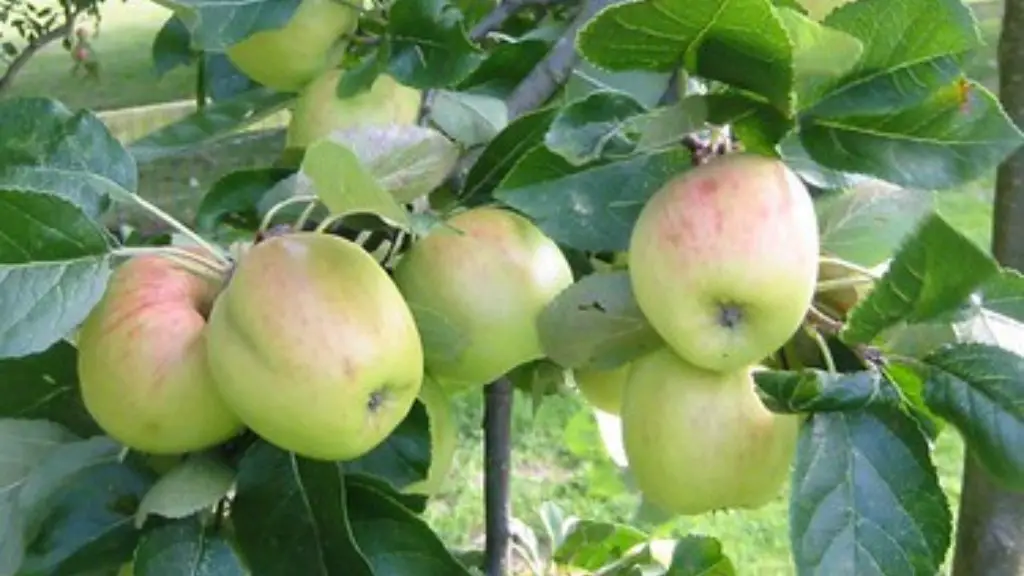Avocado trees are native to India and have a long history of being cultivated in the region for their delicious fruits. The trees can be grown in home gardens or as part of larger commercial operations. Growing an avocado tree from seed can be a rewarding challenge and an inexpensive way to add edible landscaping to your garden. With a little bit of care, you can be harvesting avocados directly from your own tree in just a few years.
Avocado trees will do best in tropical and sub-tropical regions of India, where they are well-suited to a Mediterranean climate. Trees will tolerate some cold temperatures but cold snaps can damage plants and reduce yields. To ensure a good crop of avocados, your tree should receive at least 6 hours of direct sunlight a day and consistenly warm temperatures.
Choose a spot in the garden that has well-drained soil and full sun. The soil should consistenly moist and should be evenly distributed among the root system. While avocado trees can tolerate some light shade, it is best to find a spot where the tree can receive sunlight for most of the day. To give your tree the best start to its life, work in organic matter or compost into the soil before planting.
You will need to get ahold of a fresh, viable avocado seed. Plant the seed in a medium-sized pot, making sure the pointy side is pointed upward, and just barely above the soil level. Place the pot in an area that receives plenty of indirect sunlight and keep the soil moist. After just a few weeks, the avocado seed should begin to germinate, and you should be able to see the root and stem beginning to form.
Once the stem begins to grow and reaches a few inches in height, it’s time to transplant the tree into the garden. Dig a hole that is just slightly wider than the root ball and deep enough to completely cover the rootball. Remove the avocado tree from the pot and place it in the hole. Fill in the hole, making sure to compact the soil around the root ball. Water the tree immediately after planting, making sure the roots are completely soaked.
Make sure to water your avocado tree regularly, especially during the dry months. The soil should remain consistenly moist and never be allowed to dry out completely. Monitor your tree’s water needs during summer months and water often if necessary. Mulching around the tree will help to retain moisture in the soil and protect the roots from the sun’s heat.
Once your tree has achieved a mature size (this will typically take anywhere from three to five years), you can start fertilizing it. Look for a fertilizer that is high in nitrogen and low in phosphorus. Organic fertilizers are preferable, as chemical fertilizers can damage the tree’s delicate root system. Fertilize your tree in late winter or early spring, just before the flowering season begins.
Pruning and Controlling Pests
Pruning helps to ensure that your avocado tree stays healthy and grows in the right direction. Pruning is best done early in the summer when the buds begin to form, but the branches have not yet matured. Prune back any stems or branches that are dead, diseased or crossing opposite each other. This will help to give the tree an even shape and allow more light to reach the inner parts of the tree.
Pests can also be an issue, especially in tropical and subtropical climates. Common pests include scale insects, aphids and whitefly. To deal with these pests, you can use a combination of cultural, physical, and chemical controls. Hand-pick any affected leaves or branches before using an insecticidal soap or neem oil spray to control further spread.
Harvesting Avocados
Avocados can take anywhere from 9 months to 2 years to mature, depending on the climate. To determine when an avocado is ripe, look for a softening of the skin and a slight change in colour. Avocados should be left on the tree until they are ripe, then harvested with a gentle twist. Fully mature avocados can be stored in the refrigerator for up to one week.
When it’s time to harvest, use a pair of clippers to cut the avocado from the stem. Be careful not to leave any stems on the fruit, as they can puncture the skin and cause the fruit to turn brown. If the avocados are difficult to remove, try leave them on the tree for a few days to see if they ripen further.
Grafting Avocado Trees
Grafting is a technique for propagating an avocado tree without the need for planting a seed. Grafting can be used to quickly grow trees that are true to their parent type and which will bear fruit much earlier than if grown from a traditional seed. The process involves taking a stem cutting from a parent tree (called the scion) and attaching it to a compatible rootstock, which then acts as the “trunk” of the tree.
Grafting is not a simple task and requires a lot of skill and knowledge. If you plan to attempt grafting an avocado tree, it is advisable to seek professional help to ensure the success of your graft. The process requires a great deal of care and precision, and if done incorrectly can result in death or deformity of the grafted tree.
How to Graft an Avocado Tree
The process of grafting an avocado tree is relatively simple and can be done using a few basic tools and materials. To start, locate a healthy and disease-free scion from an existing avocado tree. Cut the scion off just below a bud and make sure that it is a clean cut with no small stems or leaves attached. The rootstock should also be clean, healthy and disease-free. To ensure a successful graft, the scion and rootstock should be compatible varieties and close relatives.
Using a sharp blade, cut a wedge into the rootstock and insert the scion so that the cambium layer (layer of living cells which transport nutrients and water) is lined up on both the rootstock and scion. Wrap the scion and rootstock tightly with grafting tape, making sure that there are no gaps or air pockets and that everything is firmly secured. The graft should be tightly sealed to ensure a secure bond.
The grafted tree should be kept in a warm and humid environment for several weeks after grafting, to encourage the two parts of the tree to form a strong bond. Once the graft has taken, the trees can be transplanted into the garden. Water regularly, but be careful not to over-water, as excess water can cause the rootstock to rot. After approximately six months, you should notice the first signs of fruit on your tree.
Training and Shaping the Tree
Shape and size of the tree can have a great impact on its production and health. Pruning should begin when the tree is young and continue throughout its life to ensure a good shape. Look for any stems that are crossing each other or that are too long, and prune them back to the desired size. You can also prune the top of the tree when it is forming buds to encourage a more bush-like shape and maximise yields.
Supporting the trunk of the tree is another way to control its shape and size. You can use stakes to support the trunk and train the tree in a certain direction. This can help to keep the tree from leaning too far to one side and will help to reduce the risk of falling branches or broken stems.
Avocado trees can also be trained to grow flat in a fan shape, like an espalier. This is done by spreading the stems out in a fan pattern and tying them to wooden slats or wires that are attached to the side of a wall. Training an avocado tree in this way will reduce the need for pruning, as the tree is kept at a consistent height and width, and the fan shape will allow for more light to reach the inner branches.
Using Girdling to Increase Yields
Girdling is a technique used to increase yields and help overcome avocado flowering and fruiting issues. The process involves removing a strip of bark from the tree trunk and branches, which limits the water and nutrient flow to the top of the tree. Girdling is best done on trees that are at least five or six years old, as it can cause damage to younger trees. The process should only be done by an experienced professional or an experienced gardener.
Girdling can be done using a wide range of tools, from sharp knives to specialized girding tools. The goal is to cut a thin strip of bark from around the circumference of the trunk or branches. The strip should be wide enough to stop water and nutrient flow, but not too large as to cause significant damage. Once the girdle is in place, water and nutrient flow to the top of the tree will be restricted, which can increase yields and force the tree to flower and fruit earlier.
Girdling should only be done by an experienced professional, as the technique is difficult to master and can easily cause tree damage. If done incorrectly, girdling can cause a decrease in yields, dieback or even tree death. The girdle should also be monitored regularly and removed after one season, as leaving the girdle in place for too long can lead to more damage to the tree.




